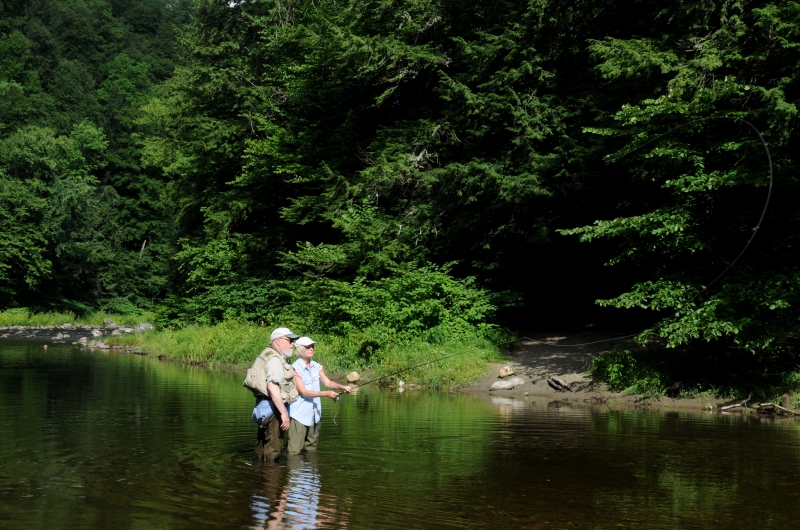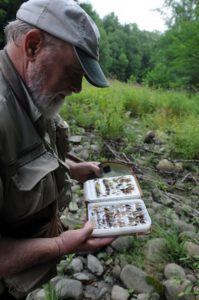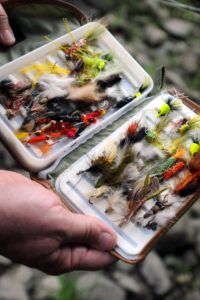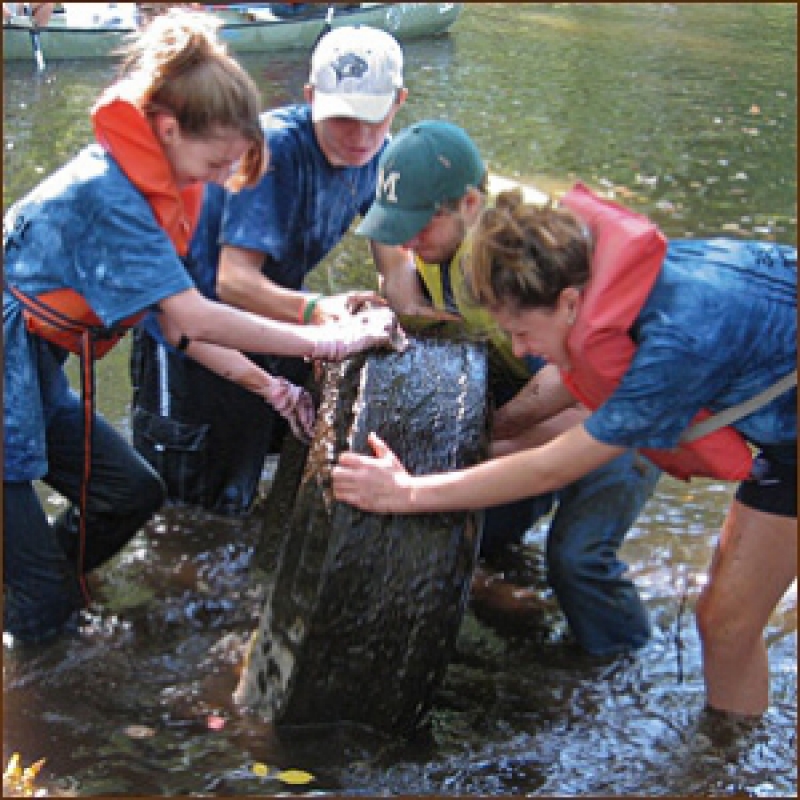I am interested and involved in all things wet, whether it’s the Connecticut River as river steward, public policy as chairman of the Natural Resources, Fish, and Wildlife Committee in the Vermont House, or on a watershed river as a guide.
I have been living here since 1972. That’s 46 years. How I arrived goes this way: I left Pennsylvania in junior high school for Connecticut, where I stayed through undergraduate school at the University of Connecticut. I have been friends with Bill and Jeanette White since the 1960s. In 1972 we all were living in Illinois. I was in Chicago and they were at Southern Illinois University in Carbondale.
I went to visit them one weekend and learned Bill was about to leave for Vermont to build a house on land they owned in Westminster West. I wasn’t doing anything important in Chicago, as I had finished my work at Saul Alinsky’s Midwest Academy, so I decided to leave with Bill.
He picked me up in Chicago in an old white van they owned, and we drove off to Vermont. Since then I have lived within two miles of where I staked my tent for the first time when Bill and I got here.
What could be more attractive to someone like me? There’s a healthy system of rivers and streams to fish. There’s time to fish them. The landscape is pleasing to look at and welcoming. The pace of activity is reasonable and not frenetic. The scale of the society is at a human level, whether in public policy, economic activity, or the size of our communities.
There are sturdy and competent people living here who share my values. The community seems to value what I can contribute to its well-being.
Windham County is blessed with rivers and streams that welcome people to enjoy the out-of-doors. There are four major tributaries to the Connecticut River in the county: the West, Saxtons, Williams, and Deerfield rivers.
The West River is the largest river in the county, with numerous swimming holes both on the main river and on its tributaries. One of the most frequented swimming areas is Indian Love Call, a series of pools on the Rock River, a tributary joining the West in Dummerston just off Route 30 north of Brattleboro.
The West River itself has a hiking trail that begins in Brattleboro and follows an old rail line, 30 Miles of Trouble while it was operating, so nicknamed because of the number of washouts the line suffered over the years.
During high water, people can canoe and kayak the length of the river, from the United States Army Corps of Engineers flood control dam in Townsend to the river’s confluence with the main Connecticut River in Brattleboro.
There also is the high-water release event spring and fall from the Ball Mountain Dam in Jamaica. Access is through Vermont State Park in Jamaica, a nice place to camp whether or not you’re doing the whitewater release events.
The USACE maintains a primitive camping area at the confluence of the West and Winhall rivers in Jamaica, off Route 100.
During dry spells with low flows in the river, canoeing makes for a bumpy ride. If you want a flat-water experience, launch onto the Retreat Meadows just north of Brattleboro on Route 30 any time in spring, summer, or fall, regardless of flow conditions.
At the Retreat Meadows you’ll find more than 55 acres of calm water, replete with wading birds, water animals, and lots of bass.
If you don’t bring a canoe, you can rent one at Vermont Canoe Touring Center (vermontcanoetouringcenter.com) or the West River Marina, both off Route 5 in Brattleboro.
The Saxtons River has two swimming areas of note on the lower river, one each in Westminster and Bellows Falls: Little Egypt and Twin Falls. Both are tough to find but worth the exploring to find them. These are dangerous locations for swimming, and the landowner has posted them “no trespassing.” Take pictures or sit and listen to the falls but please respect the landowner’s wishes.
If swimming is your goal there are two safe swimming areas off of Granger Street in Bellows Falls.
Williams River has swimming areas off Pleasant Valley Road in Rockingham. Of note: the confluence of the Williams River where it joins the main Connecticut River, Herricks Cove just off Route 5 north of Bellows Falls. This area is a National Audubon Society Important Bird Area.
The backwater areas around Herricks Cove host a summer-long population of songbirds, osprey, bald eagles, wading birds such as heron and killdeer, ducks, and geese of all varieties that swim and breed here. The area is an important stopover refuge for migrating birds of all kinds in the spring and fall.
The drive-in area is maintained by Great River Hydro, which offers a boat launch to the main river. You can paddle with ease to the cove from there and find picnic tables and charcoal grilling in a peaceful setting.
The Deerfield River is in the county’s western side. Many of the headwaters of the main river and its tributaries flow through Green Mountain National Forest or power company land. This area is wild—almost completely undeveloped. There’s a federally maintained primitive camping area on the main river. A matrix of roads is maintained for access to the power company dams and to allow folks into the national forest. The access to this area is a turn off of Route 9 west of Wilmington.
If your map doesn’t show this network of roads, follow the river as it turns northward off Route 9.
And then there’s the fishing.
Most of the lower reaches of the tributaries to the main Connecticut River are populated with smallmouth bass, rock bass, some trout, and, depending on the season, perch, pickerel, and walleye.
Fishers can wade the tributaries at most times during the summer. The main river has the same mix of species but fewer trout, with the bonus of largemouth bass.
Headwater areas on all tributaries to the Connecticut River hold trout—usually rainbow or brook—with an occasional brown trout thrown in to make things interesting.
There are no special regulations on any of our Windham County rivers. If you’re 14 or older and want to fish you’ll need a fishing license, which you can get online and at many stores. Licenses come with a booklet of general fishing regulations that will inform you of creel limits and other restrictions.
_________________________
The 21st Annual Source to Sea Cleanup is scheduled for September 28 and 29. Last year more than 2,500 volunteers in more than 170 cleanup groups spanned the entire length of the Connecticut River from the Canada border to the mouth of the river in Old Lyme, Conn., including many of its tributaries. The volunteers’ hard work removed amazing junk from our rivers with beverage containers and tires as always the most commonly found items. The water is cleaner, river banks are safer and the wildlife are happier thanks to the generous efforts of sponsors, businesses, watershed organizations, and, especially volunteers. Volunteers are needed for this year’s cleanup. Go to http://www.ctriver.org for details.
Westminster Rep. David Deen is chairman of the House Committee on Natural Resources, Fish, and Wildlife. He’s also a former river steward for the Upper Valley of the Connecticut River, from the Massachusetts border to Canada, for the former Connecticut River Watershed Council—now the Connecticut River Conservancy—and is a professional fly fishing guide.

























































